Behind the broadcast: Going inside the ESPN+ control room for a Yale men’s basketball game
“When you’re directing a show or producing a show, it’s kind of like playing a game,” Evan Ellis ’12, Yale’s broadcast services coordinator, said of the adrenaline rush that accompanies a live sports production.
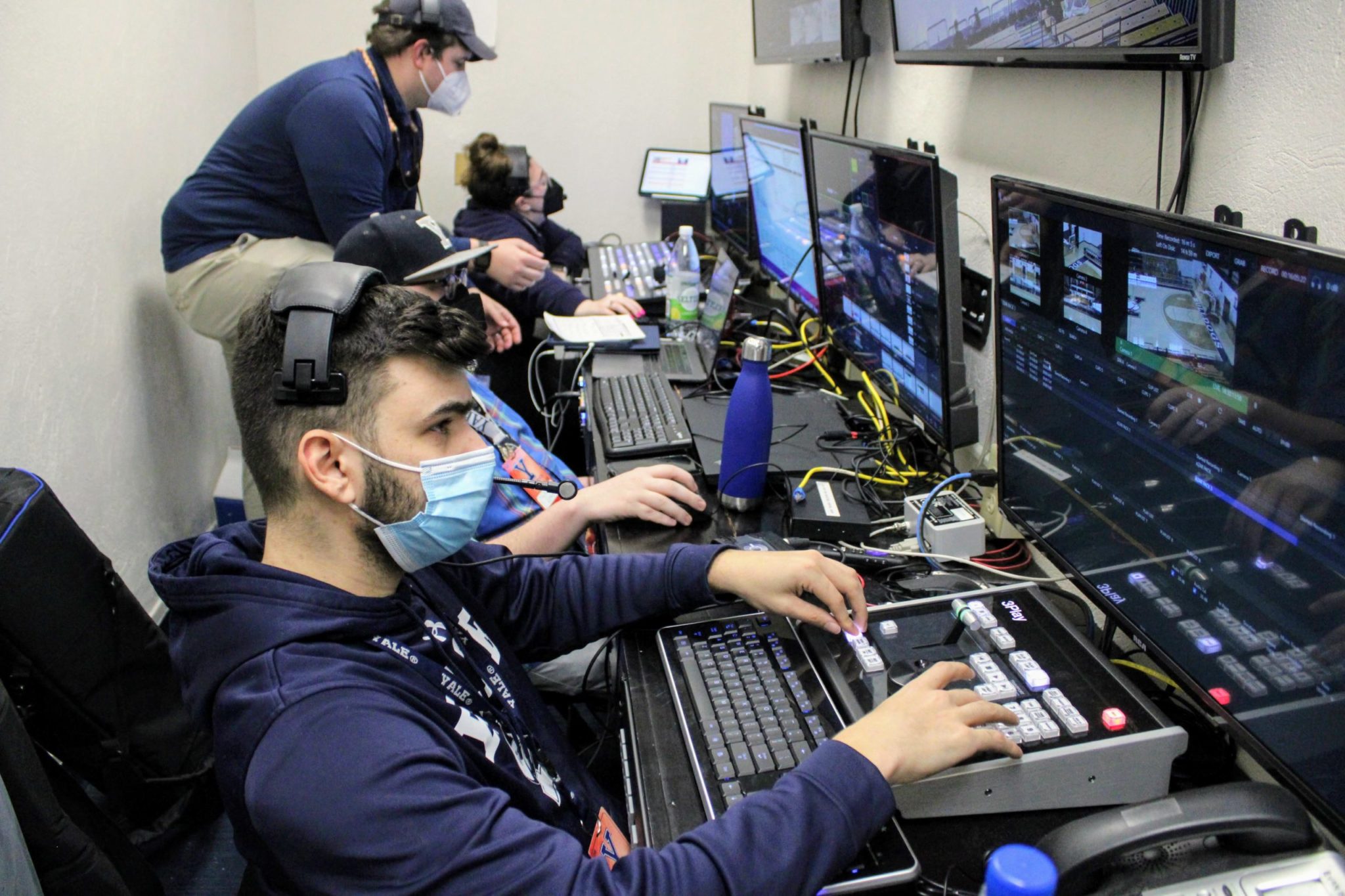
William McCormack, Contributing Photographer
It was just past 3 p.m. on the Saturday that the Yale men’s basketball team hosted Harvard last month, and the John J. Lee Amphitheater was empty. Undergraduate fans, allowed to return to an indoor athletic competition for the first time since mid-December, would file into the arena’s wooden stands and seats later that evening. With about four hours until tipoff, Yale players were starting with a pregame meal and would continue on to stretch, strategize and shoot around, bouncing between the court and their locker room in a familiar rhythm as game time neared. But in the middle of the afternoon, the court was still.
In a small, windowless room two turns away from the shiny hardwood sat Stephanie Doheny and Evan Ellis ’12, Yale’s broadcast services coordinator. They served as the lead producer and director for that night’s game on ESPN+, ESPN’s subscription streaming service that has distributed Yale and Ivy League athletic events since the conference signed a 10-year contract with the company in 2018. The two sat before six monitors, lines of cables and a long table of complicated-looking control panels, with a human-sized tower of network hardware looming in the corner of the room. The show, as they called it, required a crew of 11 to put on — one more than the number of players that occupy a basketball court at any given time — and I was there to watch them do it.
“This is live television,” Ellis told me as he and Doheny carried out pre-production preparation that afternoon. “No matter if it’s Yale-Harvard basketball on ESPN+, Daytona 500, the Super Bowl, there are going to be issues that come up … my blood pressure’s up from 5 o’clock until I tell the crew to leave.”
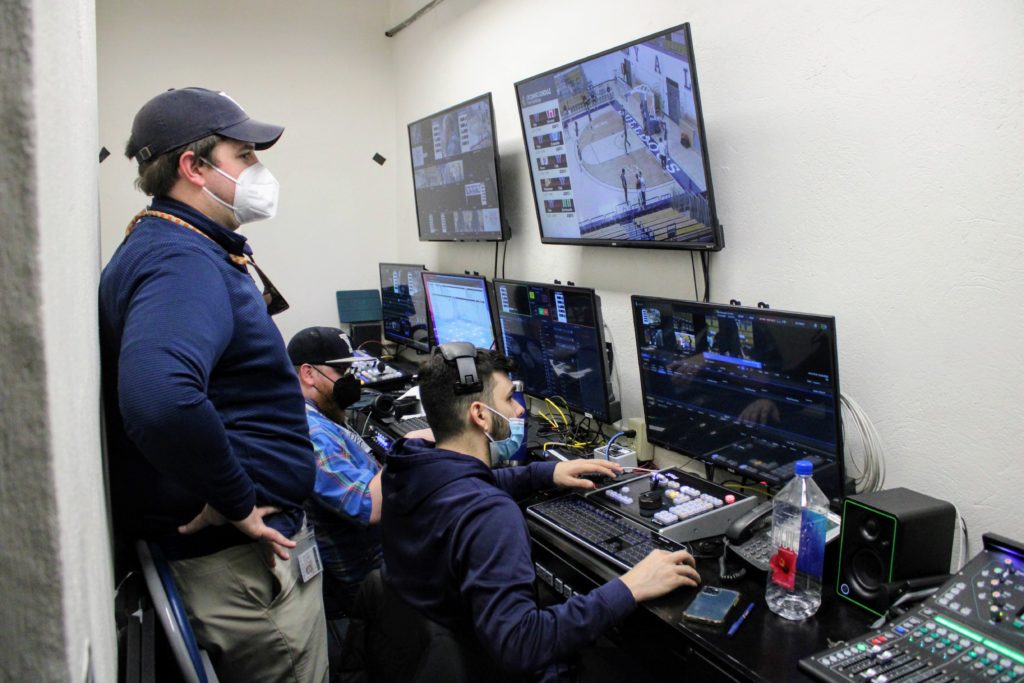
As the men’s basketball beat reporter for the News, my usual seat for games is in John J. Lee Amphitheater’s snug, makeshift media seating — middle row, left side. In three seasons, I had walked by the broadcast control room a couple of times every home game to access the court and the media room where Yale head coach James Jones and a couple players hold a small postgame press conference. Stepping inside the control room and sitting down for the first time felt overwhelming: the space was like a walk-in closet, small but dense with expensive electronic accessories. “I promise you it’s not as scary as it looks,” Doheny, who works for Yale Athletics on a freelance basis, assured me of the switcher, the colored board that she oversaw as the director of the game. She tells everyone she trains the same thing.
She and Ellis, wearing a Yale cap and a KN95, outlined the basics for me. Four main crew members occupy the control room — Doheny in the director role, Ellis as the producer, Troy Turnwald on graphics and Connor Sauer working replay. Four camera operators capture footage in the actual arena, with a camera on each baseline and two filming the full court. As the game was beginning, an extra team member arrived to control the audio switch. And then there’s the “talent” — that night’s play-by-play announcer, Kevin Gehl — and color analyst Christine Huber, who narrate the action for fans. Of the 11, they are the only two who appear on screen for the viewers.
Ellis called Saturday’s game a “full build” for the crew. ESPNU, the company’s national channel dedicated to college athletics, had aired the Yale-Dartmouth men’s basketball game the night before, parking a broadcast truck outside Payne Whitney Gymnasium and bringing their own cameras and crew for the higher-level production. Their presence on Friday meant that Ellis’s campus-based ESPN+ team had to fully set up all their cameras and equipment before Yale played Harvard the next night.
As producer, Ellis said he “guides the storytelling part of the broadcast.” Turnwald creates the graphics, like game statistics, that pop up on viewers’ screens throughout the game. Sauer uses a NewTek “3Play” system to collect replays for the broadcast, the arena’s video boards and referees, who occasionally conduct official video reviews of close calls or contested plays. Operating the switcher, Doheny actually selects which feeds to show in real time.
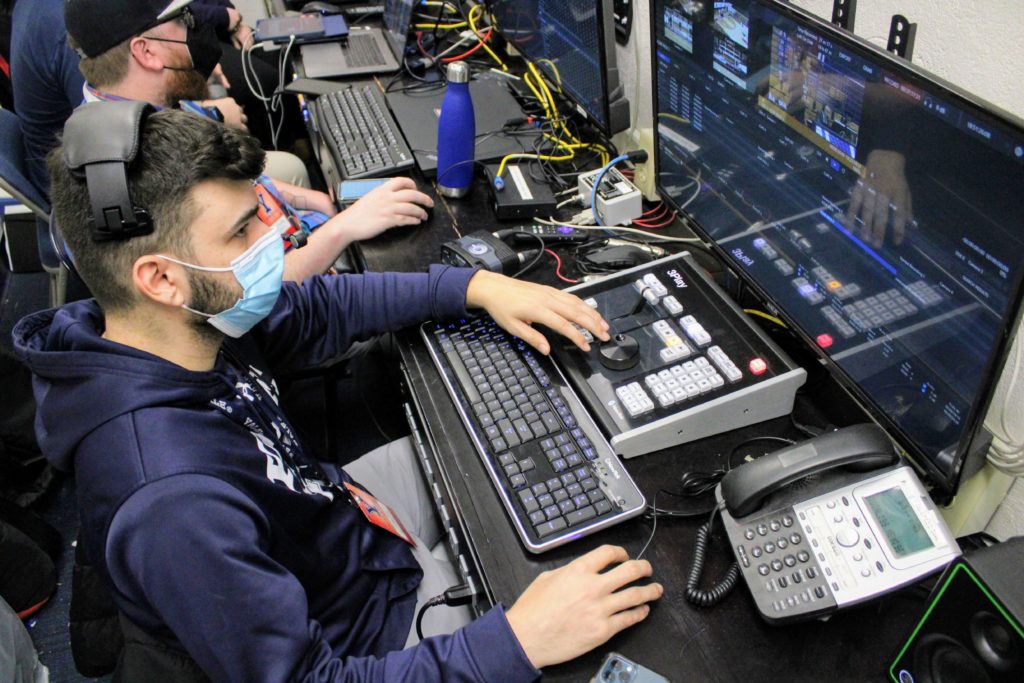
Packed into the control room for a few hours, the team develops their own camaraderie. There are jokes and general fun, but Ellis warned me pregame that issues often emerge, forcing the crew to troubleshoot and resolve them in real time.
“[There’s pressure] knowing that thousands of people are going to be watching the show and they want to see Yale-Harvard basketball,” Ellis said. “If something happens and it’s your fault, it’s a little bit terrifying, right?”
Live television creates a stressful thrill in the control room, but that “rush of production” is also what seems to draw people to broadcast careers. The production crew has no direct opponent, but they approach their jobs with a competitive rigor. With warmups having started around the corner, Ellis pulled up the ESPN+ stream for that evening’s Yale-Harvard women’s basketball game in Boston, which tipped off two hours before the men’s game in New Haven. I ask: Is he watching the women’s stream just to follow Yale, or is he studying the mechanics of Harvard’s broadcast too?
“No comment,” Ellis joked. “Obviously I’m watching it from an interest standpoint, but I am very competitive.”
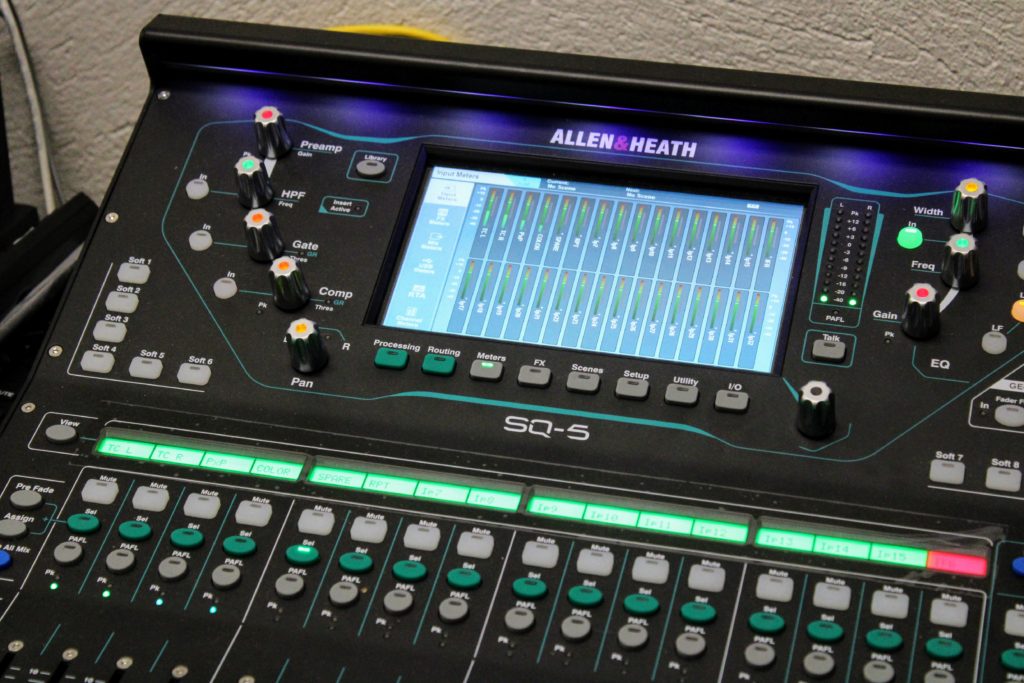
Ellis, who played on the football team as a student at Yale, contributed to the University’s first athletic streaming service, Yale All-Access, in 2010. As a junior and senior, once the football season ended after the fall, he put together broadcasts of hockey, basketball and eventually some lacrosse. Upon graduating from Yale in 2012, he served as a graduate assistant in athletic broadcasting at the University of Tennessee and got a job at Yale Athletics heading into 2017. While he was gone, the Ivy League Digital Network standardized streaming operations across the conference in 2013. The Ivy League on ESPN and on ESPN+ followed. Ellis said broadcast standards and quality across the league have continued to improve.
Yale now broadcasts 21 sports, and the University produced 131 athletic events during a pandemic-shortened 2019–20 year. Ellis said the production team often has discussions with partners at ESPN to collect feedback and focus on improvement.
“[We’re] just seeking that feedback and assistance to try to put ourselves in a situation where this looks like you’re watching a game on ESPN,” Ellis said. “[Where] you can’t tell it’s done from a University control room with students and young professionals that are learning. … We’re tasked with trying our best to live up to an ESPN linear standard.”
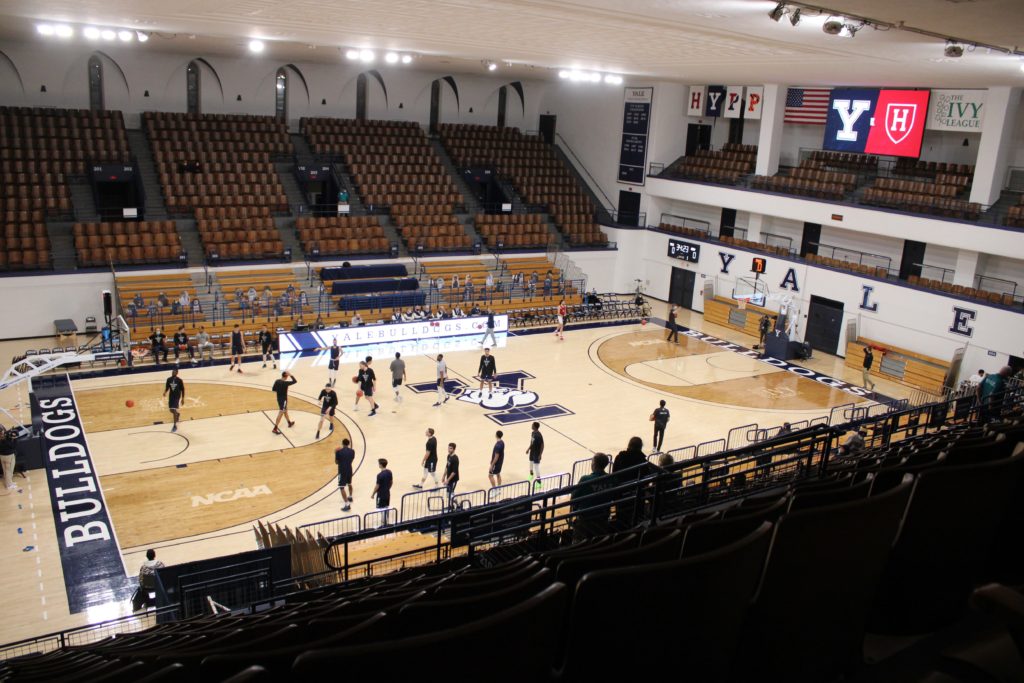
With tipoff at 7 p.m. for that night’s game, Ellis arrived at the gym at 2:20 p.m. Doheny showed up at 2:30 p.m. Turnwald, Sauer and the camera operators settled in by the time Harvard and Yale players completed their pregame shootarounds on the court. About an hour before tipoff, Ellis called into a national ESPN operator for a routine pregame check-in.
Up at the very top of the gym, Jaylan Granberry ’23, new to the team, was responsible for Camera oOne, which captures the high-wide shot. Camera two, operated by another crew member, sat next to Granberry’s and allowed the broadcast to zoom in on certain players, coaches or parts of the court with a “high-tight” angle. “My job’s really basic,” Granberry shouted over 50 Cent’s “Many Men,” which was playing through the arena’s speakers on the pregame playlist. “It’s kind of nerve-wracking because it’s my first time doing it I guess, but it’s simple. I watch a lot of sports games, so hopefully I have a little knack for it.” He captures the full scope of the action, rotating a mounted camera from one half of the court back to the other as the teams trade control of the ball throughout the game.
Kristin Pantelis operated Camera Three on one baseline. She said she works most basketball games and generally knows what type of shots her producer and director will appreciate. Ellis and Doheny gave her key players to monitor. Before the game, the crew prepared a package to showcase each team’s top scorer, Yale guard Azar Swain ’22 and Harvard guard Noah Kirkwood, warming up.
“We get players to watch for the game,” Pantelis said with another pregame song — YoungBoy Never Broke Again’s “Hot Now — playing in the background. The control room will direct her and the other camera operators over the course of the game but she said the heart of the action is usually easy to identify. “Follow the ball mostly — that’s what they tell us.”
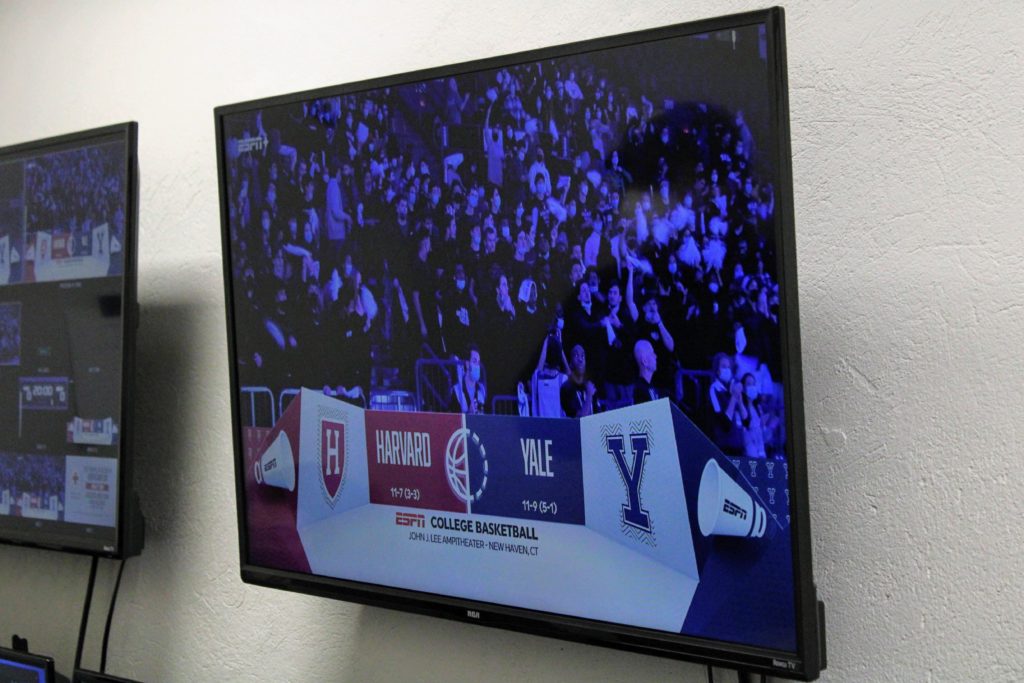
With about four hours of preparatory work now nearly complete — and as the actual basketball teams finished warmups out in the gym around 6:50 p.m. — the production team appeared poised to perform themselves. Ellis was standing and surveying the monitors like a fired-up field commander, giving directions over a headset that connected the control room to the rest of the broadcast team scattered throughout the gym. Doheny and Ellis communicated with Granberry at Camera One and also provided instructions for the operator of Camera Two, walking them through where to locate their desired subjects. They wanted shots of the head coaches — Jones and Harvard head coach Tommy Amaker — ready for the top of the broadcast. “Zoom all the way in to the left side,” Doheny instructed over a headset in the control room. A monitor in front of her showed the video feed closing in on the Harvard bench as the pair of camera operators made sure they knew which coach was Amaker — the one with the quarter-zip and the dark gray pants, they were told from the control room.
Once they neared airtime, Ellis did almost all of the talking, communicating time markers over the headset — five minutes, four minutes, two minutes, one minute until air — and a game plan for the top of the show. A shot from Camera One with an animation and the “locator” would lead into Camera Four on the baseline. The star-player pack — first Swain, then Kirkwood — would follow before the feed shifted to Camera Three, to shots on each head coach and on into the rest of the night.
They started recording with four minutes until air. The national anthem started with two minutes left. And then they were live: “Animation! Locator. Ready Four, take Four,” Ellis said standing in the small room, his concentration focused on the monitors a few feet away on the bare wall. Once they successfully orchestrated the opening, each team’s starting five had gathered at midcourt ready for the tipoff.
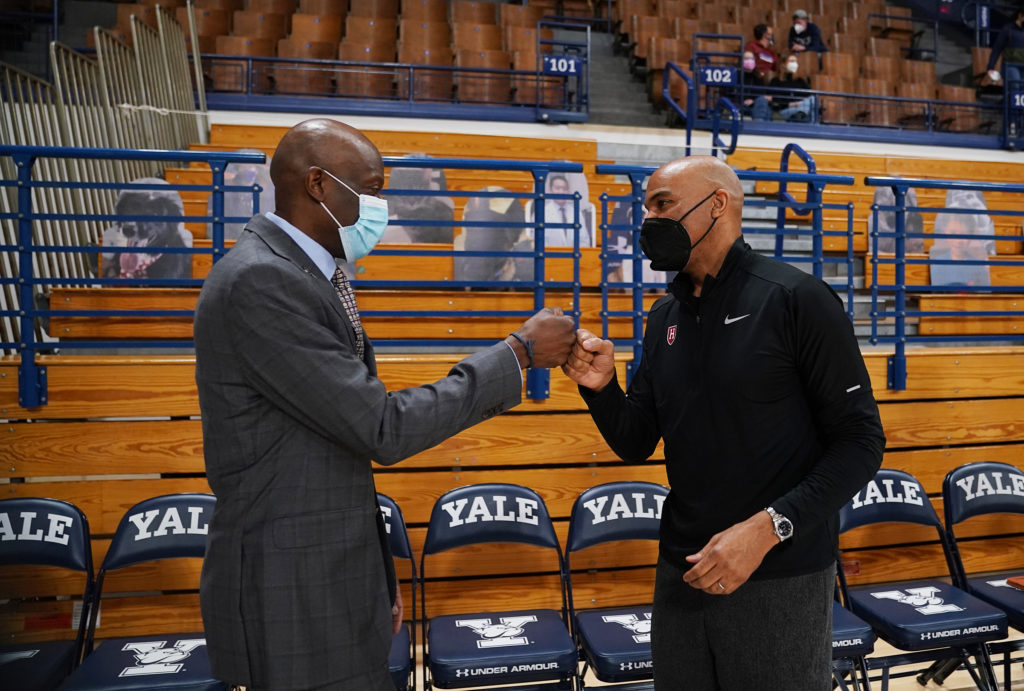
“Let’s tip this, and let’s light this firecracker,” Ellis said. “We’re playing basketball.”
The ESPN+ commentary that viewers at home hear is more or less neutral. The control room is definitely not. “What a move,” Ellis marveled when Swain created a three-point attempt for himself. “Money!” he shouted on another attempt. On big Yale shots, the crew made an active effort to showcase the student reaction. Due to the University’s fan attendance restrictions at the time, the general public was not allowed to spectate the game, but 1,104 Yale community members, almost all of them undergraduates, still did. Their chants and cheers echoed over the volume of the announcers’ commentary in the control room. Exiting the broadcast bunker to peek out at the court was like emerging from a dive underwater, the crowd noise growing less muffled and then, with the court in full view, instantly clear.
At the first media timeout, Ellis counted the team out of the live action and they got their first break: “Good first segment, y’all.” After an approximately 90-second pause, Ellis counted them back in. They started with a shot on Gehl and Huber, the announcers and transitioned back to game action. When they moved from the next media timeout back to game action, they decided to televise a graphic with the series history — Harvard had won eight straight regular-season games against Yale going into the weekend, though the Bulldogs had claimed their two most recent postseason matchups.
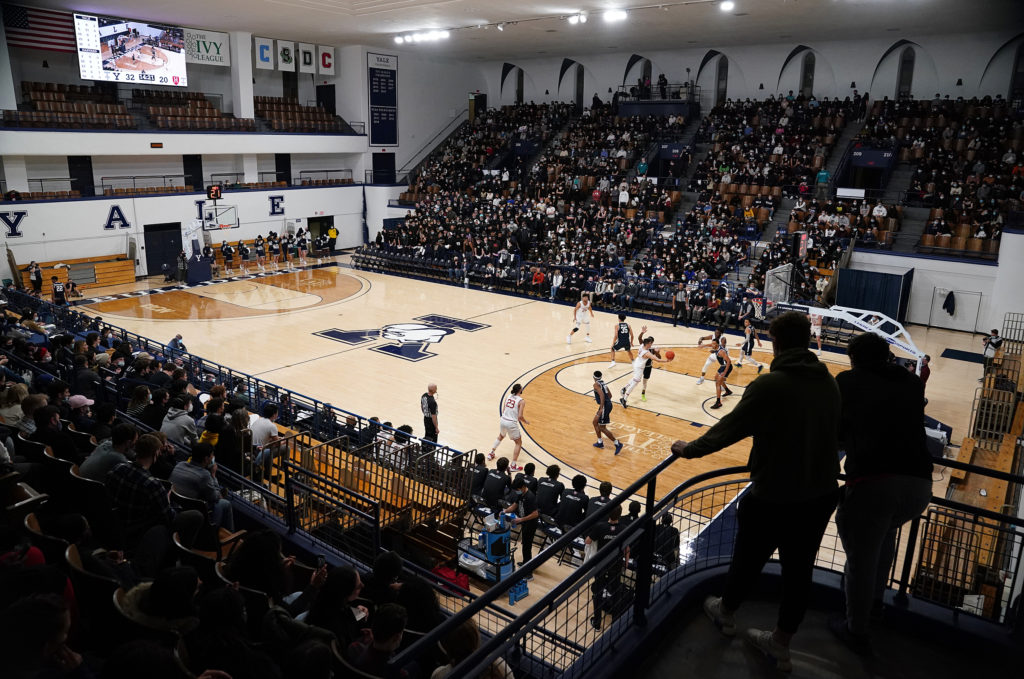
After big Yale shots, the ESPN+ crew made an active effort to showcase the student reaction. Cameras One and Two occupy the guarded platform above all the seats. (Tim Tai, Staff Photographer)
Over the course of two halves, there are usually eight total media timeouts in a men’s college basketball game. As much as the actual action on the court varies, the control room usually responds with a consistent set of actions. Before the game, Ellis told me basketball was one of his favorite sports because of its speed. The control room reacts in real time for a frenzied few minutes and takes a breather, along with each team, during the television timeouts.
Harvard and Yale each had 69 possessions that Saturday, just under the average for a men’s college basketball game, which translated to almost 150 gliding camera transitions for Granberry on Camera One. In a low-scoring game that featured more defense than hot shooting, Yale led 27–14 at halftime. Although the Bulldogs were ahead for the large majority of the night, Harvard’s Kirkwood heated up in the second half to make it a close game in the final minutes.
Minor issues emerged with the recording, Ellis told me seven hours later, when Lee Amphitheater returned to its dormant, resting state around 10 p.m., but the end result was a successful broadcast and a high-energy 58–55 Yale win. Even with some rookies on the production crew, Ellis thought it was one of the best shows they had produced: “When you have a good game, it’s a lot easier to make it look good.”
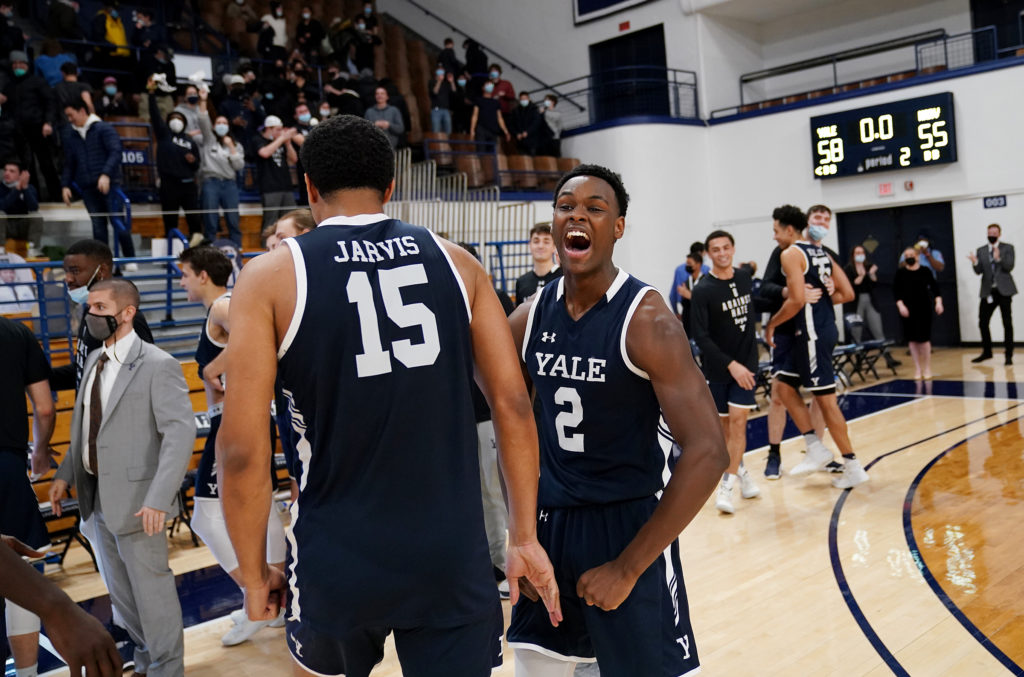
It ended up being one of the last men’s basketball games that Ellis produced. A couple of weeks after the game, Ellis announced that he was leaving his alma mater to accept a new job as director of video operations at Western Carolina University. For Ellis, a Tennessee native, the new position is closer to home; according to his biography on the Yale Athletics website, his wife is also a Southerner, hailing from Charlotte, North Carolina.
Just past 10 p.m., Ellis’s final task of game night was straightforward: turning off the lights and locking up the control room. Cooling down from the thrill of live production would be more difficult. Ellis planned to go home, pet his dog and sit on the couch to watch anything except sports — maybe the Food Network.
“For me sometimes, I have to come down,” Ellis said. “When you’re directing a show or producing a show, it’s kind of like playing a game. When I get home, my wife will be dead tired, and I’m still in that adrenaline. It’s the closest thing I’ve found to playing.”







